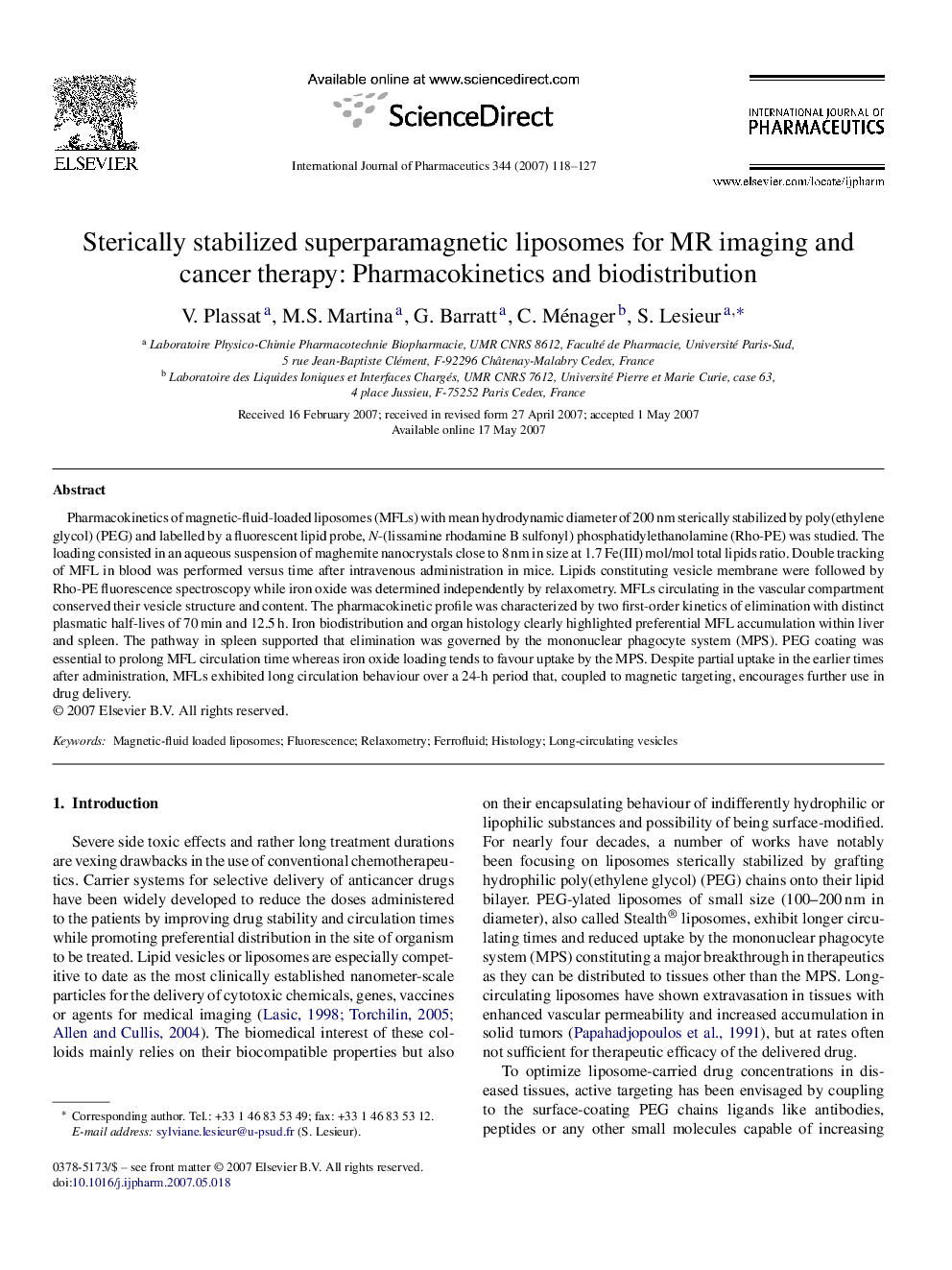| Article ID | Journal | Published Year | Pages | File Type |
|---|---|---|---|---|
| 2505856 | International Journal of Pharmaceutics | 2007 | 10 Pages |
Pharmacokinetics of magnetic-fluid-loaded liposomes (MFLs) with mean hydrodynamic diameter of 200 nm sterically stabilized by poly(ethylene glycol) (PEG) and labelled by a fluorescent lipid probe, N-(lissamine rhodamine B sulfonyl) phosphatidylethanolamine (Rho-PE) was studied. The loading consisted in an aqueous suspension of maghemite nanocrystals close to 8 nm in size at 1.7 Fe(III) mol/mol total lipids ratio. Double tracking of MFL in blood was performed versus time after intravenous administration in mice. Lipids constituting vesicle membrane were followed by Rho-PE fluorescence spectroscopy while iron oxide was determined independently by relaxometry. MFLs circulating in the vascular compartment conserved their vesicle structure and content. The pharmacokinetic profile was characterized by two first-order kinetics of elimination with distinct plasmatic half-lives of 70 min and 12.5 h. Iron biodistribution and organ histology clearly highlighted preferential MFL accumulation within liver and spleen. The pathway in spleen supported that elimination was governed by the mononuclear phagocyte system (MPS). PEG coating was essential to prolong MFL circulation time whereas iron oxide loading tends to favour uptake by the MPS. Despite partial uptake in the earlier times after administration, MFLs exhibited long circulation behaviour over a 24-h period that, coupled to magnetic targeting, encourages further use in drug delivery.
